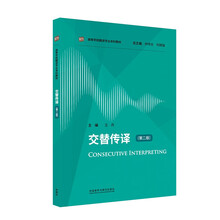1 Basic Concepts of Electric Circuits
1.1 Introduction
1.2 Charge and Current
1.3 Voltage
1.4 Power and Energy
1.5 Summary
2 Basic Laws of Electric Circuit
2.1 Introduction
2.2 Ohms Law
2.3 Kirchhoffs Laws
2.4 Series Resistors and Voltage Division
2.5 Parallel Resistors and Current Division
2.6 Sununary
3 Capacitors and Inductors
3.1 Introduction
3.2 Capacitors
3.3 Inductors
3.4 Summary
4 Electronic System
4.1 Introduction
4.2 Electronic System Block Diagrams
4.3 Information Processing Versus Power Electronics
4.4 Analog Versus Digital Systems
4.5 Conversion of Signals from Analog to Digital Form
4.6 Relative Advantages of Analog and Digital Systems
5 Operational Amplifiers
5.1 Introduction
5.2 Operational Amplifiers
5.3 Ideal op-amp
5.4 Inverting Amplifier
5.5 Noninverting Amplifier
5.6 Summary
6 Digital Logic Circuits
6.1 Basic Concepts
6.1.1 Logic Variables and Digital Words
6.1.2 The AND Gate
6.1.3 The Logic Inverter
6.1.4 The OR Gate
6.1.5 Boolean Algebra
6.1.6 NAND, NOR, and XOR Gates
6.1. 7 Logical Sufficiency of NAND Gates and of NOR Gates
6.2 Electrical Specifications for Logic Gates
6.2.1 Logic Ranges
6.2.2 Positive Versus Negative Logic
6.2.3 Input and Output Currents
7 Transformer
7.1 Introduction
7.2 Construction of Transformer
7.3 The Ideal Transformer
8 Electrical Machines
8.1 A Brief Overview
8.2 Induction Machines
8.2.1 Introduction
8.2.2 Induced Voltages
8.3 Synchronous Machines
8.3.1 Introduction
8.3.2 Construction of Synchronous Machines
……
9 Automatic Control Systems
10 Measurement
11 Switching Components
12 Power Semiconductor Switches
13 Rectifiers and Inverters
14 Basic Knowledge of Power Systems
科技英语学习要点(二)
练习参考答案
参考文献
展开










